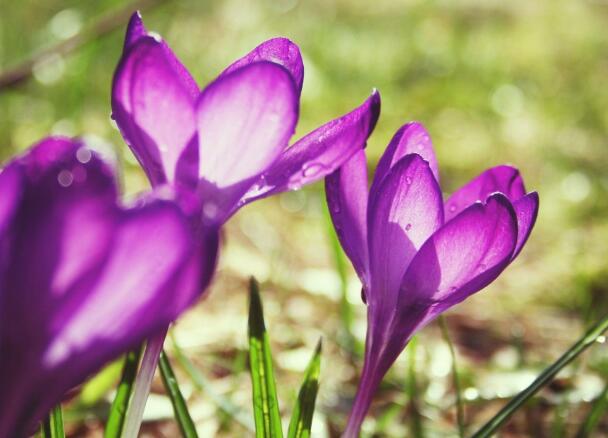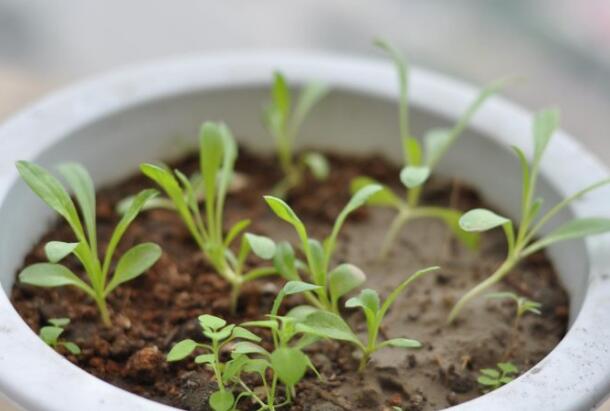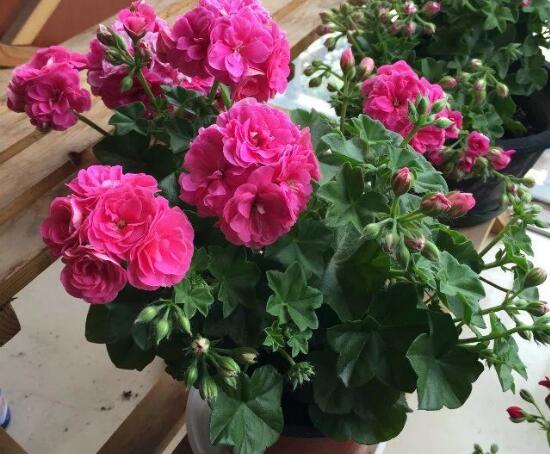How to reproduce saffron, how to reproduce saffron / asexual reproduction
Saffron is a common plant in people's life, and it is a kind of flower that many plants like to cultivate. How to reproduce saffron is also an issue that many people are concerned about. In fact, the reproduction of saffron comes according to the location, and the methods of planting are also different. The specific details of the breeding methods of saffron are detailed below, which we will take a look at.
1. How to reproduce saffron / different methods in different places

Saffron does not have seeds, its reproduction is mainly carried out by the bulb, generally can choose to breed in the open field or indoor reproduction, the two propagation methods are different. As for the detailed method, it is recorded below, and we will move on. There is also a point to the size of everyone, when choosing saffron balls, it is best to choose larger and healthy balls, which is more conducive to your saffron growth.
2. Methods of propagation / asexual reproduction of saffron
The breeding method of saffron is generally to use asexual reproduction, if you want to reproduce it better, first of all, you have to understand what is called asexual reproduction, which will be of great help to the breeding process of saffron.
1. Asexual reproduction
Asexual reproduction can also be called apogamy, which is a way of reproduction of offspring produced by parents without sexual cells. Asexual reproduction is characterized by only one parent participating in the production of offspring. This asexual parthenogenetic inheritance is one of the most primitive ways.
Asexual reproduction does not undergo complex embryonic development, let alone the reorganization of genetic information. Therefore, the genetic material of offspring produced by asexual reproduction is exactly the same as that of parental bands. This kind of reproduction is beneficial to the rapid increment of individuals in a suitable environment. Asexual reproduction produces offspring by dividing and budding.
two。 Open field reproduction
This method of reproduction belongs to planting before picking flowers. The breeding period is generally between August and October every year, and the earlier the better. Saffron bulbs are generally planted according to the three levels of large, medium, small, medium and small, which will be easier to manage. When planting, first open the seed ditch in the border, then press the main bud of the bulb upward, gently press it into the ditch, cover the soil directly, and then cover it with 1-2 cm of soil the next day, so as to prevent dry cracking and hardening.
3. Indoor reproduction
The flower bud differentiation and budding and flowering of saffron are completed indoors. Around the middle of May, after the upper part of the saffron has withered, the bulbs can be dug out, then moved into the room, and placed on the indoor plaque frame according to the size. When breeding, there is no need to bury the soil, directly put the bud mouth of the bulb upward and horizontally in the plaque, leaving a little gap between the bulbs.
Note: the breeding method of this kind of saffron has both advantages and disadvantages, the advantage is that the florescence is more concentrated, which will be easy to pick flowers, save labor and time, short occupation time and less diseases. The disadvantage is that the time of planting the bulb is too late, which will affect the growth of the plant and is not conducive to the hypertrophy of the bulb.
How to grow saffron? Planting technique of saffron
Saffron, also known as saffron, saffron, its stigma is a valuable traditional Chinese medicine, with sedative, expectorant effect, the main treatment of yellow gallbladder, hepatosplenomegaly, menstruation, fever and other diseases. Saffron is widely cultivated in all parts of China. The following is to introduce the saffron planting technology, the content is only for the majority of growers for reference.
I. Plant characteristics
Saffron, also known as saffron, saffron, blossoms but does not bear fruit, through the bulb for asexual reproduction. Saffron likes mild and cool climate, is afraid of heat and cold, and is suitable for growing at a temperature of-5 ℃ ~ 25 ℃. The soil had better be fertile sandy land. The corms are dormant in summer and sprout in autumn. It blossoms in late October. Flowers bloom during the day and wither at night. The methods of breeding bulbs in the field and picking flowers indoors are mostly used in our country. The effective components of the filaments are high and the quality is excellent. Saffron can be cultivated in most areas.
Prepare saffron before it is put on the shelves
1. Housing choice
The house should choose to sit north to south, well-ventilated, spacious and bright room.
2. Shelf design
The shelf of saffron is designed to be 1.5-1.8 meters long, 1 meter wide and 1.8-2 meters high.
3. Disinfection
25% carbendazim 500 times solution was used to disinfect the bed, bed frame and tray to prevent the occurrence of diseases.
Indoor management technology of saffron
1. Get on the shelf
The first year of planting requires the purchase of a single healthy ball with a weight of 20-30 grams and no mildew or disease spots. Generally, the ball can be planted for 8-10 years. The yield of saffron bulb is about twice as much every year, and the planting scale can be expanded and the planting benefit can be increased without investment in the corm after the second year. The balls will be on the shelves in mid-late August. Before putting on the shelf, soak the seed ball in 25% carbendazim 500 times solution for 20 minutes to prevent the occurrence of the disease. Let the bulb head up and bottom down, the single layer tightly placed in the tray, and then put the tray on the wooden frame.
2. Management of budding period.
The period from late August to mid-September is the period of flower bud differentiation, which requires room temperature to be kept at 24: 27 ℃; indoor humidity is maintained at 70% and 80% to promote germination. From late September to mid-October, the bulbs began to sprout, the room temperature should be kept at 16: 23 ℃, and the indoor light should be gradually brightened to enhance the natural light. The humidity in the room should be controlled at about 80%.
3. Management of flowering period
The flowering period is from late October to mid-November, and the suitable temperature is 15-18 ℃, otherwise it is easy to produce dead flowers and rotten flowers. The humidity is controlled at 70. 80%.
4. Keep the terminal bud and peel off the lateral bud
There are many lateral buds in bulbs from late September to mid-November. in order to cultivate large corms and increase filament yield, lateral buds should be removed in time. Generally, bulbs with less than 20 grams leave 1 main bud, those with 20 grams of 30 grams leave 2 main buds, and those with more than 30 grams leave 3 main buds.
5. Picking flowers
The indoor bulb blossoms at the end of October and ends in mid-November, and the florescence is about 15 days. The time to pick flowers is before the flowers are in full bloom. It is usually collected twice a day at 8: 10 in the morning and 1: 3 in the afternoon. The blooming flowers are picked on the same day.
6. Take silk
The picked flowers still need to be peeled off in time, and this process is called silk picking. The pistil of saffron consists of three connected stigmas and the lower style, and its most effective part is the red stigma of the pistil. The way to take the filament is to peel off the recovered petals gently, pinch it off at the bifurcation point of the filament, and take out the red part of the style. Be careful not to leave the style too long, which will affect the appearance of the filament. In production, it is required to pick flowers on the same day, peel flowers and take silk on the same day. If the flowers are not peeled off that night, the flowers stacked together will generate heat and make the filaments spoil easily.
7. Processing methods and storage
In order to ensure the quality of filaments, manual drying is now mostly used. Spread the stigma of the collected saffron thinly on white paper and bake in a drying box of 35-40 degrees for 6-8 hours. The dried filaments should be stored in a closed and cool place.
IV. Field cultivation management
1. Treatment of seeding balls
The bulbs collected from filaments were planted in the field in mid-November. before planting, the bulbs were soaked in 25% carbendazim 500-600 times solution for 20 minutes to prevent the occurrence of diseases and insect pests.
2. Land preparation
Saffron is favored for continuous cropping. Choose sandy land with good drainage, loose and fertile land. Legumes, corn, rice and other crops had better be planted in the previous crop. Saffron belongs to shallow root plants with fibrous roots, so it is very important to apply adequate basal fertilizer. 4000-5000 kg of rotten farm manure is applied per mu. Attention should be paid when applying fertilizer, and the fertilizer should be scattered evenly on the ground.
3. Make beds
Combined with turning the ground, mix the base fertilizer into the soil and rake it flat. Dig ditch beds in the north-south direction, with a width of 1 meter, a height of 20 centimeters, and a spacing of 30-40 centimeters. The advantage of border cultivation is to increase soil ventilation, not easy to rot roots, but also help to cover plastic film in cold weather, and improve the effect of increasing temperature and preserving soil moisture. Trench the border surface with a depth of about 8 cm. The distance between the trenches is about 20 centimeters, and then you can sow all kinds of balls.
4. Sowing bulbs
Saffron propagates with bulbs, there are many main buds and lateral buds on the bulbs, the main buds bloom and lateral buds do not bloom, each bud can form a small corm, and the mother corm can grow 6-15 bulbs. If you don't wipe the buds, there will be more and more bulbs, and the yield of flowers will be lower and lower. Before planting, according to the principle of keeping big to small, strong to weak, it is necessary to peel off excess lateral buds. The number of bulbs needed to grow saffron is relatively large, about 500 kilograms per mu. The row spacing is 15-20 cm, the plant spacing is 10 cm, and the depth is 3mi 6 cm. The main buds of the bulb are compacted with upward cover soil. Reasonable depth is also an effective measure to increase filament yield, which can not only satisfy the growth of corms, but also inhibit the germination of new lateral buds. After sowing, the root should be watered once to make the bulb have enough water to grow. After 5-7 days, human and animal manure and water can be applied together, 3000-4000 kg per mu to promote early rooting of the corm.
5. Film mulching
The film will be covered if the weather is below 5 degrees in late November. Covering the film and compacting the film with soil blocks can not only prevent freezing and cold, but also reduce the growth of weeds and promote the growth of bulbs.
6. Uncover the film
When the temperature rises from late February to early March, the bulb will be able to uncover the film when it enters the green stage. Clean up the uncovered membrane so as not to pollute the environment.
7. Intermediate ploughing
After uncovering the film, the soil should be loosened and weeded in time. The depth of intertillage is 2-3 cm, be careful not to hurt the roots of the plant.
8. Topdressing
The period of corm returning to green is also a period of rapid increase and weight gain of corm. After uncovering the film, topdressing should be carried out in time. 3000-4000 kg of human and animal manure per mu should be applied together with watering, and topdressing again half a month later. From March to April, 0.2% potassium dihydrogen phosphate was sprayed on the leaves every 10-15 days for 2-3 times to promote the rapid growth of the corm.
9. Remove the lateral buds
In April, saffron entered the late growth stage of the field. if lateral buds are found to grow, lateral buds should be removed in time so as not to affect the growth of large corms.
10. prevention and control of diseases and insect pests
The main disease of saffron after turning green is rot, and the pest is Robin root mite. The control method is to spray 25% carbendazim 500 times solution on the root of the plant after uncovering the film. If aphids appear on the leaves, dimethoate can be used to control them.
11. Harvest
Corms can be harvested when the aboveground branches and leaves of saffron turn yellow in mid-late May. Dig up the roots of the bulbs with a hoe during harvest, dig them out, remove the residual roots of branches and leaves, and dry them in the field for two days before collecting them in the storage room. Store in a cool and windy place.
The above are saffron cultivation techniques, I hope to help you, if you want to know more about agricultural technology, please pay attention to Huinong School!
Huinong net 2018 Spring Seedling Purchasing Festival is hot recruitment of high-quality suppliers, click here to sign up!
- Prev

How to sow cornflower, cornflower propagation method/September sowing 70 days after flowering
For cornflower, I believe many people have seen it, its beautiful flower shape, rich in color, is a flower loved by friends. About cornflower breeding method, very simple, a little understanding is worth, but you know cornflower breeding method? Compared with other flowers, cornflower does not cut well.
- Next

How to propagate geraniums, propagation methods / cutting / sowing / tissue propagation of geraniums
Geranium is a very ornamental plant, which can be seen in many gardens in China, and it is also the most beautiful moment when it blossoms. Of course, wanting it to bloom into beautiful flowers has a lot to do with the process of reproduction. About how geraniums reproduce.
Related
- Fuxing push coffee new agricultural production and marketing class: lack of small-scale processing plants
- Jujube rice field leisure farm deep ploughing Yilan for five years to create a space for organic food and play
- Nongyu Farm-A trial of organic papaya for brave women with advanced technology
- Four points for attention in the prevention and control of diseases and insect pests of edible fungi
- How to add nutrient solution to Edible Fungi
- Is there any good way to control edible fungus mites?
- Open Inoculation Technology of Edible Fungi
- Is there any clever way to use fertilizer for edible fungus in winter?
- What agents are used to kill the pathogens of edible fungi in the mushroom shed?
- Rapid drying of Edible Fungi

